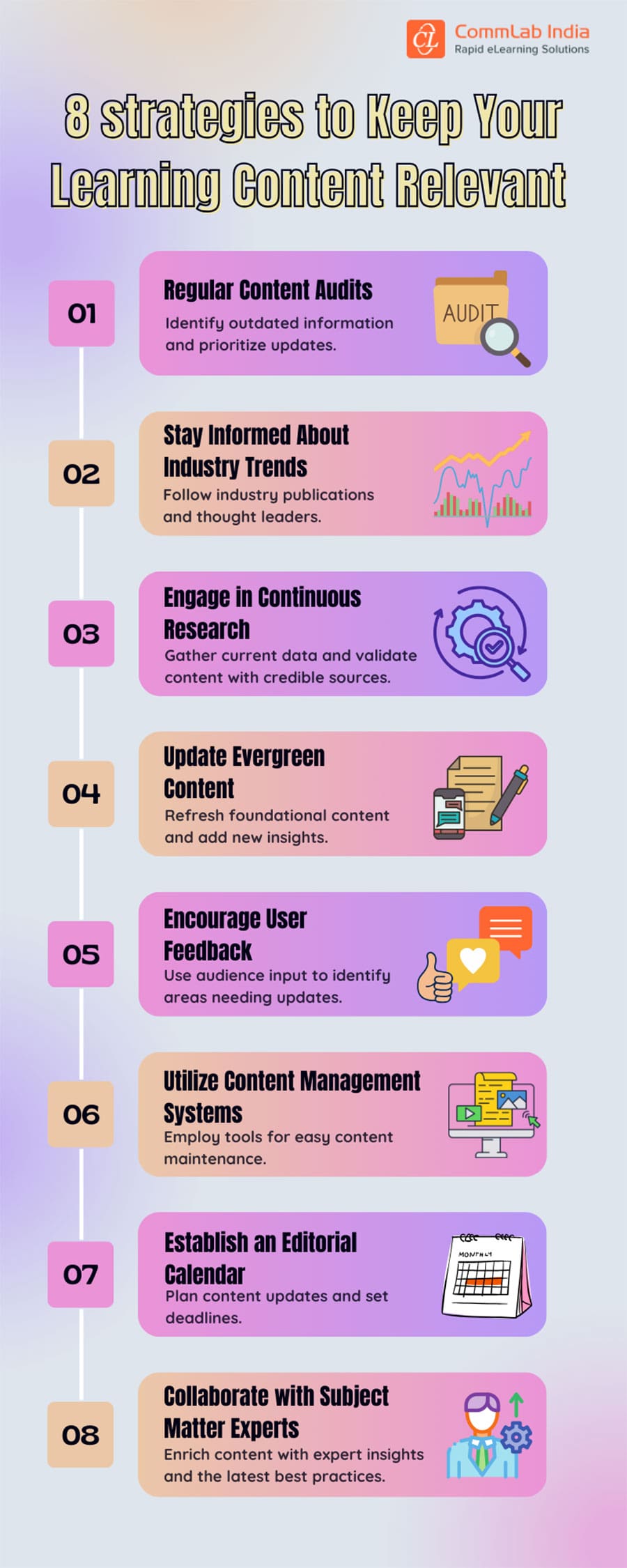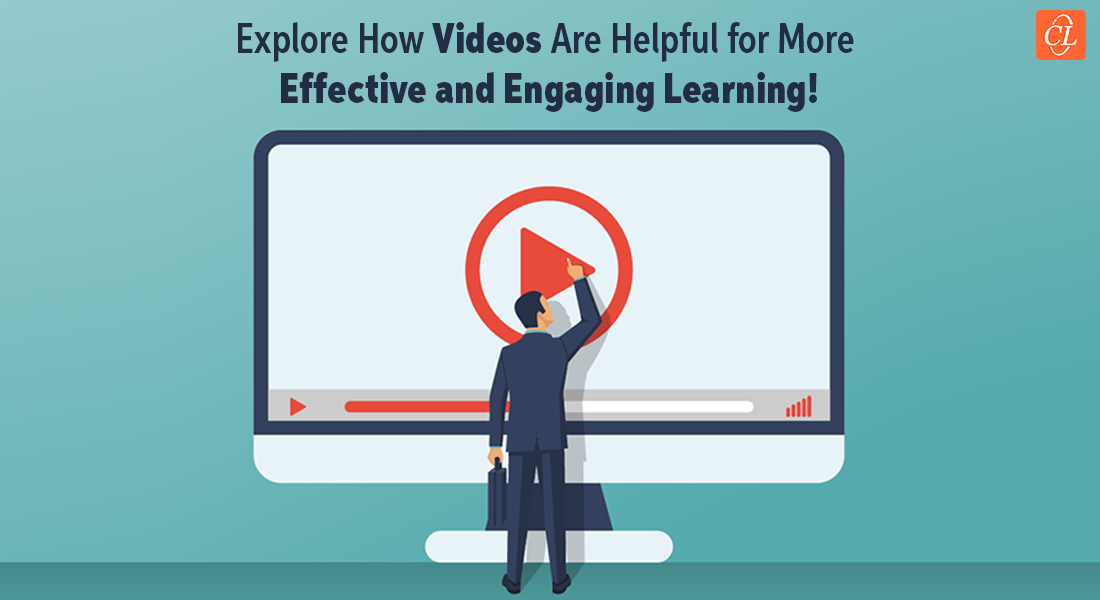8 Strategies to Keep Your Learning Content Relevant in Corporate Training [Infographic]
![8 Strategies to Keep Your Learning Content Relevant in Corporate Training [Infographic] 8 Strategies to Keep Your Learning Content Relevant in Corporate Training [Infographic]](https://blog.commlabindia.com/hubfs/blogs/relevant-learning-content-strategies-infographic.jpg)
Imagine a scenario where a firefighter is given training on medical equipment. I’m sure you must be thinking that it doesn’t make sense. It’s not relevant to their job profile. Well, you’re right! As the world of business is constantly expanding and evolving, the need for relevant learning content is greater than ever. Simply providing your employees with any kind of generic training just for the sake of it doesn’t really translate into high-impact outcomes and desired productivity.
In this blog, we'll understand the importance of relevant learning content and then move on to explore eight strategies to help you keep your learning materials relevant and aligned with the demands of the business. So let’s start!
Importance of Relevant Learning Content
Enhances Engagement
Relevant learning content is more likely to capture the learner's interest. When individuals realize that the information they are receiving in the training can actually help them progress in the direction of their goals, they become more engaged and motivated to learn. This increased learner engagement leads to better understanding and retention of the learning material.
→ Download Now: Instructional Design Strategies to Design Engaging eLearning Courses
Fosters Skill Development
Learning content that is in tune with the latest trends and technologies and has real-world application helps learners acquire practical skills that are in demand. This is particularly true for professionals belonging to the industry that is constantly evolving. Such employees continually need to update their skill sets to remain competitive in their respective fields, and relevant learning content is a must for them.
Supports Adaptability
Personal or professional, beginner or experienced, change is that one aspect that can often impact a person more than they realize. It has a significant impact on their productivity, performance, and well-being. In a corporate world where industries and job roles are in constant flux, staying adaptable is crucial. Relevant learning content eases off this anxiety and nervousness to help employees adapt to change more effectively.
Boosts Confidence
When learners have access to current and relevant learning content, it helps them stay up-to-date on industry trends. Knowing that they are equipped with the latest knowledge and skills helps them perform tasks more effectively and approach challenges with self-assuredness. All these elements boost their confidence.
Enables Organizational Growth
Keeping the learning content relevant is integral to an organization’s growth and success. Having well-informed employees contributes to the organization's goals in a better manner and enables them to adapt to changing market conditions more quickly.
Promotes Personal Development
The impact of relevant learning content is not just limited to professional development. It has a major influence on personal growth and self-improvement. Whether the learners are learning a new language, trying a new hobby, or acquiring life or leadership skills, relevant content ensures that they make the most of their learning journey.
8 Strategies to Keep Your Learning Content Relevant
To Sum It Up!
In today’s world of information overload and distraction, the importance of relevant learning content cannot be overstated. It is the key to engagement, retention, and success in both personal and professional settings. So what are you waiting for? Put the 8 strategies mentioned in this blog to practice and give your learners the best chance to achieve their goals. Along with keeping the content relevant, designing the content in an engaging manner is also important. So check out the instructional design strategies in the eBook below and say yes to effective, high-impact eLearning courses.





![Harness the Power of Rapid eLearning with Amazing Benefits [Infographic]](https://blog.commlabindia.com/hubfs/Imported_Blog_Media/Harness-the-Power-of-Raid-eLearning-with-Amazing-Benefits-Infographic.jpg)
![LMS or LXP: Which One Should You Choose? [SlideShare]](https://blog.commlabindia.com/hubfs/Imported_Blog_Media/lms-lxp-selection.jpg)
